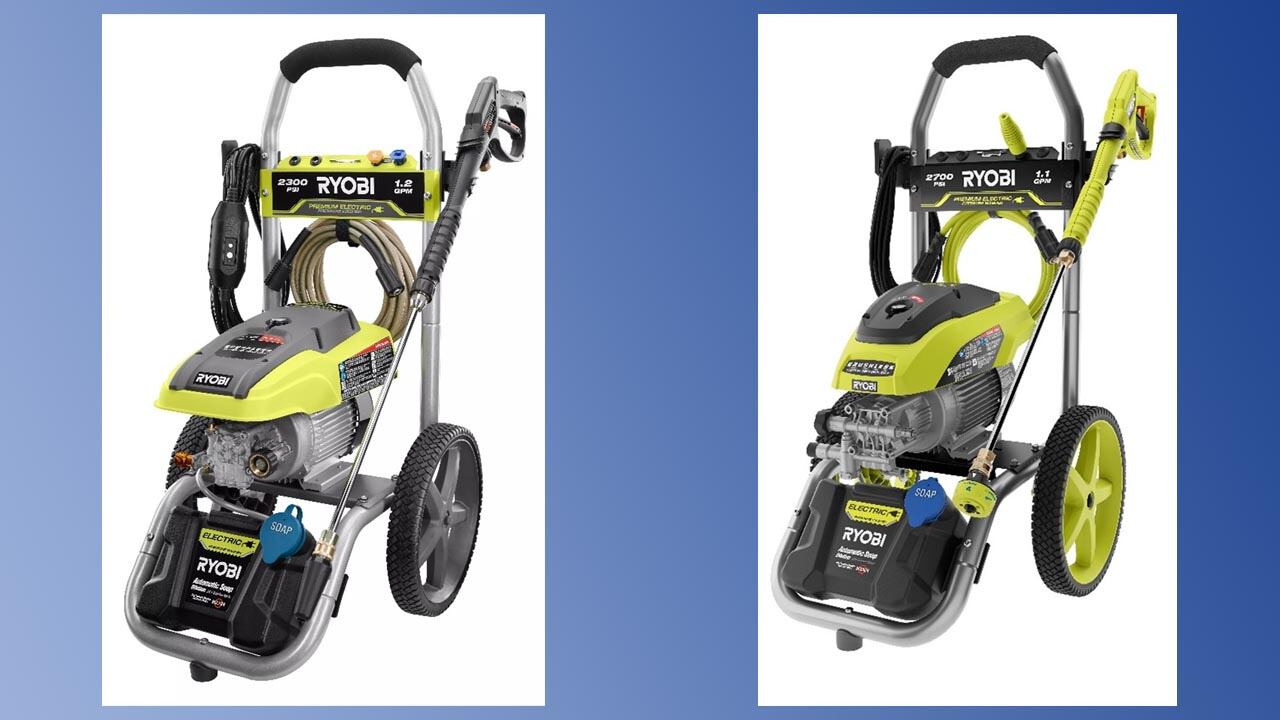Is your Ryobi pressure washer not working when you need it most? It’s frustrating when you’re ready to tackle tough cleaning jobs, but your trusted tool won’t start or loses power.
You might feel stuck, unsure of what’s wrong or how to fix it. Don’t worry—you’re not alone. You’ll discover simple and effective solutions to get your Ryobi pressure washer back up and running quickly. Keep reading, and soon you’ll be cleaning with confidence again.
Common Causes Of Power Loss
Power loss in a Ryobi pressure washer stops it from working properly. Understanding common causes can help fix the issue faster. Several simple problems might cause the pressure washer to lose power. Checking these areas first saves time and effort.
Electrical Issues
Electrical problems often cause power loss. A damaged power cord or loose plug can stop the washer. Circuit breakers or fuses may trip due to overload. Faulty switches and worn-out motors also affect power. Always check the power source and connections.
Water Supply Problems
Pressure washers need a steady water supply to work. Low water pressure or no water flow causes power loss. Kinks or leaks in the hose block water from reaching the machine. A closed or partially closed water valve limits water supply. Make sure the water source is strong and steady.
Clogged Nozzles
Nozzles can clog from dirt and debris in the water. A blocked nozzle reduces pressure or stops water flow. Cleaning the nozzle regularly prevents clogging. Use a small tool or needle to clear the blockage. A clean nozzle ensures full power and proper spray.

Credit: www.reddit.com
Basic Troubleshooting Steps
Basic troubleshooting helps find simple issues quickly. It saves time and effort before calling for repairs.
Start with easy checks. Sometimes the problem is small but stops the pressure washer from working.
Check Power Source
Ensure the pressure washer is plugged in correctly. Confirm the outlet has power by testing with another device. Avoid loose plugs or damaged sockets.
Try using a different power outlet. Some outlets may have no power due to a tripped breaker or wiring issues.
Inspect The Extension Cord
Use a heavy-duty extension cord made for outdoor tools. Thin or damaged cords can reduce power flow.
Check the cord for cuts, frays, or exposed wires. Replace the cord if it looks worn or broken.
Keep the cord as short as possible. Long cords can cause voltage drops and stop the washer from working.
Reset The Gfci Outlet
Many pressure washers plug into GFCI outlets. These outlets protect from electrical shocks.
Press the reset button on the GFCI outlet if it has tripped. This often restores power to the pressure washer.
Test the outlet by plugging in another tool. If it does not work, the outlet or circuit breaker might need attention.
Fixing Water Flow Problems
Water flow issues stop your Ryobi pressure washer from working well. Fixing these problems is often easy. Small blockages or loose parts can reduce water pressure. Check each part carefully. This helps restore strong water flow and better cleaning power.
Clear The Inlet Filter
The inlet filter stops dirt from entering the washer. Dirt can clog this filter and block water flow. Remove the filter from the water inlet. Rinse it under clean water to clear dirt. Use a soft brush if needed. Put the filter back securely before using the washer again.
Unclog Spray Nozzle
The spray nozzle can get clogged with debris. This lowers water pressure and reduces spray force. Remove the nozzle from the wand. Look inside for dirt or mineral buildup. Use a thin wire or needle to clear the holes. Rinse the nozzle with water. Reattach it tightly for proper spray.
Ensure Proper Hose Connections
Loose or damaged hoses cause water leaks and weak flow. Check all hose connections on the washer. Make sure they are tight and secure. Look for cracks or holes in the hoses. Replace damaged hoses to keep water flowing well. Proper connections ensure strong water pressure during use.
Motor And Pump Issues
The motor and pump are the heart of your Ryobi pressure washer. Problems here often stop the machine from working right. These parts need to work together to create strong water pressure. A motor that doesn’t run or a pump that won’t push water means no cleaning power.
Understanding the motor and pump issues helps fix the pressure washer fast. Checking these parts step-by-step can find the problem. The steps below guide you through testing the motor, priming the pump, and replacing bad parts.
Test The Motor Function
Start by checking if the motor runs properly. Listen for any strange sounds or if the motor does not turn on at all. Use a multimeter to check the electrical connections. Make sure the power source works. If the motor does not respond, it may be faulty or need repair.
Prime The Pump
Sometimes the pump needs priming to work well. Priming means filling the pump with water to remove air inside. Without water, the pump can run dry and get damaged. To prime, connect the hose and let water flow into the pump. This step helps the pump build the right pressure.
Replace Faulty Parts
Worn or broken parts cause motor and pump failures. Look for leaks, cracks, or worn seals on the pump. Check brushes and bearings in the motor. Replace any damaged parts to restore function. Use parts made for your Ryobi model to ensure a good fit.
Maintenance Tips To Prevent Issues
Keeping your Ryobi pressure washer in good shape helps avoid many common problems. Simple maintenance steps can keep it running smoothly for years. These tips focus on cleaning, storage, and regular checks.
Regular Cleaning
Clean the pressure washer after every use. Remove dirt and debris from the nozzle and hose. Clear clogs to maintain strong water flow. Wipe down the exterior to prevent rust and buildup. Clean parts last longer and work better.
Proper Storage
Store your pressure washer in a dry place. Avoid areas with extreme temperatures. Drain all water from the pump and hose before storing. This stops freezing and damage during cold months. Cover the machine to protect it from dust.
Routine Inspections
Check your pressure washer regularly for any damage. Look for cracks, leaks, or loose parts. Test the trigger and safety features to ensure they work. Replace worn or broken parts quickly. Routine checks catch small problems early.

Credit: www.aboutlawsuits.com

Credit: www.wftv.com
Frequently Asked Questions
Why Is My Ryobi Pressure Washer Not Turning On?
Check the power source, battery charge, and safety switch. Ensure the washer is plugged in or battery is charged.
What Causes Low Pressure In Ryobi Pressure Washers?
Clogged nozzles, dirty filters, or kinked hoses often reduce pressure. Clean and inspect these parts regularly.
How Do I Reset My Ryobi Pressure Washer?
Turn off the unit, unplug it, and wait a few minutes before restarting to reset the system.
Can Cold Weather Affect Ryobi Pressure Washer Performance?
Yes, cold weather can freeze water inside, causing damage or malfunction. Store the washer in a warm place.
What Maintenance Helps Keep My Ryobi Pressure Washer Working?
Regularly clean filters, check hoses, and use fresh water. Proper care extends the machine’s life and efficiency.
Conclusion
Troubles with your Ryobi pressure washer can feel frustrating. Start by checking the power source and water supply. Clean or replace clogged nozzles to improve pressure. Look over hoses for leaks or damage. Regular maintenance keeps the washer working well.
Small fixes often solve common problems quickly. Stay patient and follow simple steps carefully. Your Ryobi pressure washer will be ready soon. Keep your equipment in good shape to avoid future issues. Simple care goes a long way.
